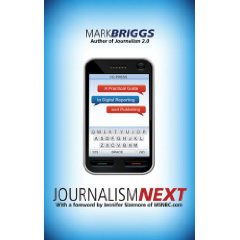Chapter 9
Posted by donaldomahony in Journalism Next assignments, tags: advice, contacts, email, information, journalismnext, opportunity, organize, personal productivity tool, spreadsheetThis chapter gives advice on two levels. Personally, it explains how to sort through online information on a daily basis without being overwhelmed. Professionally, it explains how a journalist can use technology as an opportunity to get ahead.
The first tip the chapter gives is to organize your email with filters and folders. It gives a few rules that, if followed, can save time.
- Limit time that your email program is up on the screen. Check email in between tasks instead of getting distracted by each new email.
- Spend two minutes on each email. If you can respond within that time, great. If not, file it away for later.
- Only look at an email once. This saves time and energy.
- Finish all email sessions with an empty inbox. File read emails into different folders to help clear out the inbox.
The next tip is to find the right personal productivity tool. These are useful in saving time and energy while working on what needs to be done. The books says, “The key is to find as few solutions as possible that do as many of the things on your list as possible.”
Developing a strategy is a good way to finish your taks efficiently. The book gives the equation of “what you need to manage + the right tools to manage it = personal productivity.” This is just more incentive to find the right tools.
Another tip is to sort your contacts by using a tool in your email or a spreadsheet. The contacts will be “more sortable, more flexible and more useful,” according to the book.
Building spreadsheets is important as journalism moves into the digital world. They are a great way to store and sort the data of just about anything. When making a spreadsheet, use as much information as possible. The more fields your spreadsheet has, the easier it is to sort your data.
The book gives the example of building a spreadsheet for all the books you own. The fields used could be something like:
- Title
- Author
- Publisher
- Year Published
- Number of Pages
- Fiction/nonfiction
- Hardcover/paperback
With all these fields, your books could be easily sorted. Using this technique on contact lists, story ideas, sources or other sets of information will make a journalists life much easier.


 Entries (RSS)
Entries (RSS)